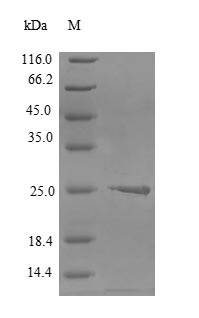This recombinant HumanCLDN6 protein is an in vitro E.coli (cell-free) expressed partial protein. Its purity is 90%+ determined by SDS-PAGE. Cell-free protein expression is the in vitro synthesis of a protein using translation-compatible extracts of whole cells. In principle, whole-cell extracts contain all the macromolecules and components needed for transcription, translation, and even post-translational modification. These components include RNA polymerase, regulatory protein factors, transcription factors, ribosomes, and tRNA. When supplemented with cofactors, nucleotides, and the specific gene template, these extracts can synthesize proteins of interest in a few hours.
CLDN6 is a tight junction molecule that participates in cell-to-cell adhesion of epithelial or endothelial cell sheets and maintains cell integrity. CLDN6 is important for the formation of barriers, especially the lung epithelial barrier and the epidermal permeability barrier (EPB), which prevent solutes and water from freely traversing through the extracellular space. CLDN6 is abnormally expressed in numerous malignancies such as ovarian cancer and testicular cancer and is implicated in cancer initiation, proliferation, apoptosis, migration, invasion, and progression. Its abnormal expression is also associated with Hepatitis C infection.






